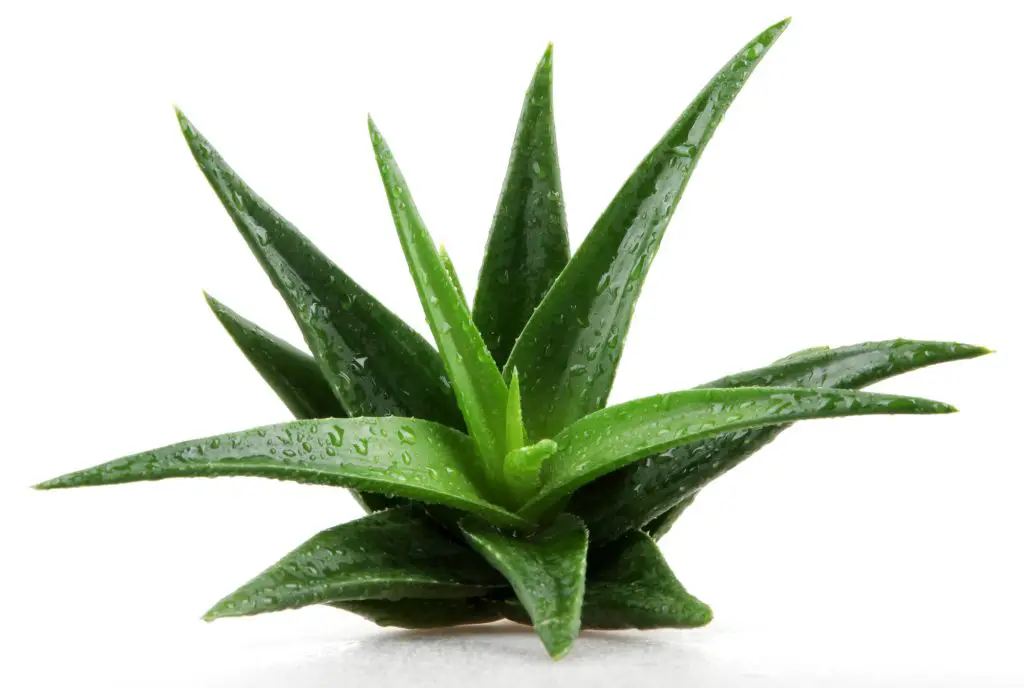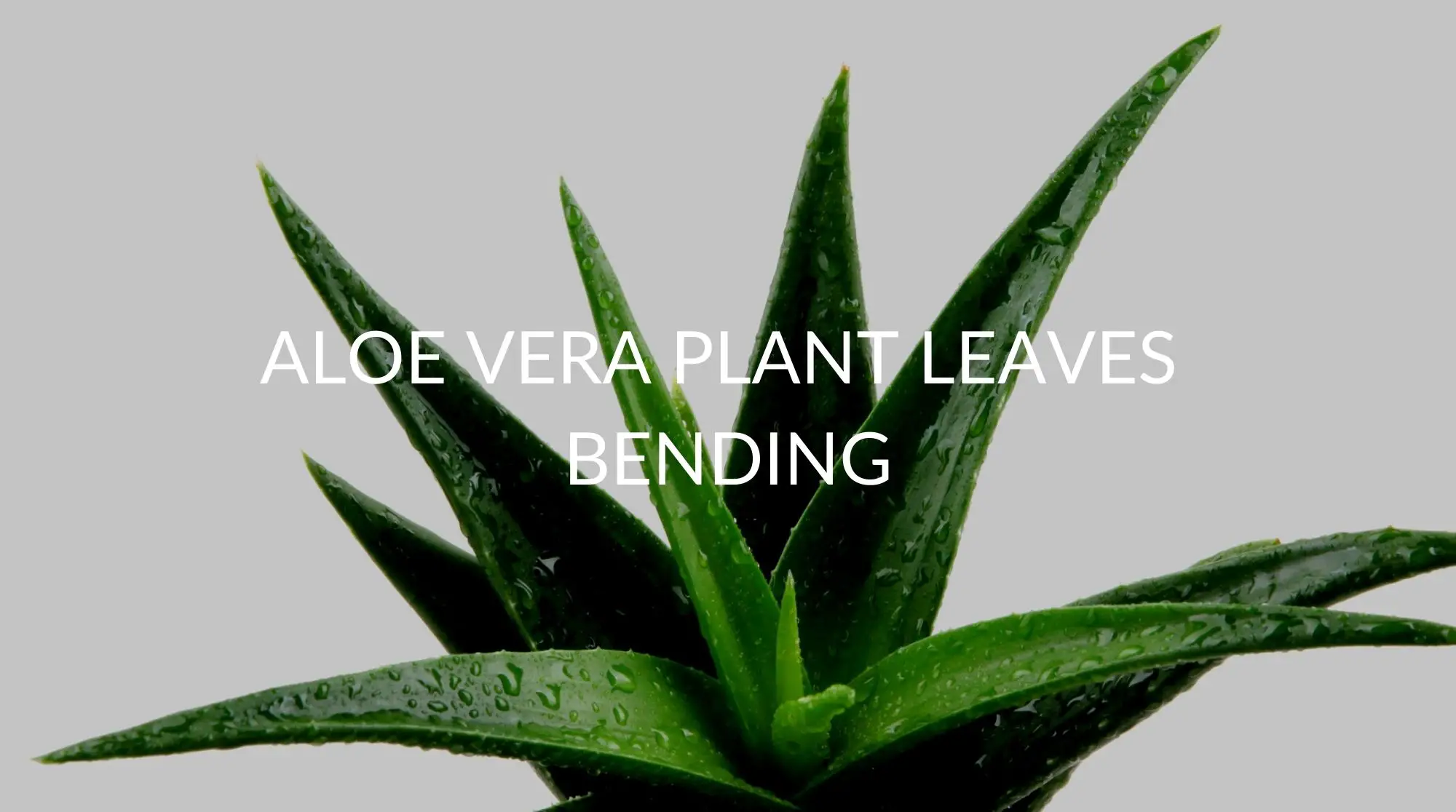Aloe vera is a very hardy plant that people love to have in their homes or gardens. But there are some things you should know if you’re caring for an aloe vera plant. If your Aloe vera plant has leaves that are bending, you may not know where you went wrong.
The Aloe vera is a succulent plant similar to a cactus and is native to very dry, arid regions. This means it needs proper care and maintenance to prevent the leaves from becoming leggy or bending. Making sure you have the right combination of water, sunlight, and soil for your plant will guarantee it grows tall and healthy.
Why Are My Aloe Leaves Bending?
There are a few reasons your Aloe vera could be developing bending leaves. Most of them are related to the plant not getting the right balance of the things it needs to thrive. Many people tend to overwater their Aloe plants, and this is one of the most common causes of bent leaves. Let’s look at some of the causes of bending leaves on Aloe plants.
Overwatering
Many people tend to overwater their plants, but because the Aloe vera plant is a succulent and native to a desert environment, it can survive longer than most plants without water. Signs of overwatering are mushy, droopy leaves that may even develop soft spots. The leaves may also turn yellow, and eventually, the plant will suffer from stunted growth and root rot.
Underwatering
If you are not providing your Aloe vera with sufficient water, you will notice droopy, wilting leaves. Aloe plants store water in their leaves, so if they are not getting enough water, they will start to use up the stores. This will make the leaves weak and cause them to bend. Another sign of underwatering is dry, cracked, or separating soil.
Too Much or Too Little Sunlight
Aloe vera needs plenty of sunlight, but too much direct sun can damage the leaves. On the other hand, not enough sun can be detrimental as well. Too much sunlight can cause faded or bent leaves, while severe sunburn may cause the leaves to turn a red or brown color. Not enough light can cause stunted growth and bent leaves that may even fall off.
Heat or Cold Shock
Aloe vera is susceptible to changes in temperature. If you move the plant from an indoor or outdoor climate too quickly, it can cause the leaves to bend from shock. It’s also possible that damage to the leaves will occur if your plant is left outside in extremely cold temperatures. If your plant was previously kept indoors and you want to move it outside, it’s best to transition slowly.
Fungal
Fungal infections are most likely caused by overwatering that leads to root rot. Different kinds of fungi can develop on a plant. A fungal infection can lead to bent leaves as the disease progresses from the roots into that actual plant itself. The leaves may also turn yellow or brown and appear dry.
Bacterial Infections
Bacterial infections can develop with any plant but is mostly a danger for young plants that aren’t established yet. This kind of infection can cause bent or drooping leaves, but you may notice that not all the leaves are affected equally.
Pests
Pests are attracted to the Aloe vera plant for the same reason we are. The aloe is full of beneficial vitamins and sugars that attract a wide variety of pests. As the pests feed on the aloe inside the leaves, it can leave them susceptible to bending and drooping. Common pests that affect aloe vera plants are aphids and mites.
Incorrect Pot Size
If your Aloe vera plant doesn’t have an appropriately sized pot, it can cause overcrowding of the roots. This can lead to a weak plant that can’t support the leaves that are trying to grow and may lead to bending and floppy leaves. It’s also important to choose a pot that has drainage holes in the bottom to prevent over-saturation of the root system.

Can You Fix Bending Leaves of Aloe Vera?
The best way to fix an Aloe plant that has bending leaves is to identify the cause and correct it. If you can intervene and fix the issue before major damage has occurred, there is a good chance the plant will recover on its own.
If only some of the leaves are severely damaged, you may be able to remove them and save the rest of the plant. The healthy leaves will do better if they don’t have to compete with leaves that may be damaged beyond repair.
Should I Cut Bent Aloe Leaves?
Cutting off damaged Aloe vera leaves may be necessary if the leaves are damaged so much that they cannot repair themselves. If you believe the condition of the leaves is not that bad, and you have corrected the problems that caused the issue in the first place, it may be worth it to wait and see if the leaves perk up and begin to stand again.
If the leaves are dry, yellow, or bent to the point where they will not be able to recover, then the best thing to do is cut them off at the base. This will allow any remaining healthy leaves to use as much of the water, sunlight, and nutrients as possible without having to compete with the damaged leaves.
If the aloe inside the leaves is still viable, you can use it or refrigerate it to save it for use later. You may also be able to re-pot some of the cuttings and root them to produce new aloe vera plants!
Here are the reasons why the tips of your Aloe plant are drying out
How To Keep Aloe Leaves from Bending?
The best way to keep Aloe leaves from bending is to make sure your plant care routine is idealized for the needs of the plant. Here are some tips for caring for your Aloe vera properly so that it grows strong and straight.
Proper Watering
Because Aloe vera is a succulent, it doesn’t need as much water as many other plants. The amount of water your plant needs will be determined by the environment where you live, whether you keep the plant inside or outside, and even the time of year.
Generally, your aloe should be watered every two to three weeks during the spring and summer. The fall and winter months require watering about every four weeks.
You will want to water until the top of the soil feels moist, but the soil should be allowed to dry out between waterings to prevent root rot. If you believe the roots are too moist and are starting to rot, it’s probably best to re-pot the plant in fresh soil.
Proper Sunlight
Aloe vera loves sunlight and needs plenty to thrive. Aim for indirect sunlight or limit the amount of direct sunlight to the morning hours to prevent sunburn on the leaves. If your plant is kept outdoors, try to move it out of direct sunlight during midday. Plants that are kept indoors should be placed in a western or south-facing window to ensure they get adequate light.
Ideal Temperature
Aloe vera does best between 55- and 80-degrees Fahrenheit (13 and 27 degrees Celsius). For the most part, plants kept indoors will do just fine. Plants can be kept outside during the spring and summer months when the temperature is warmer. But make sure to bring them inside if it gets too cold at night. You may also want to limit their exposure to the outdoors on hot days.
Healthy Soil
Aloe vera plants are succulents, so choosing the soil that is specially designed for this type of plant is key to keeping them healthy. Traditional gardening soil packs too tightly and will not give the roots the correct amount of drainage. Choose a soil made for succulents. You don’t need to add any rocks or gravel to the bottom of the pot.
Correct Pot
The best pot for an aloe vera plant is determined by the size of your plant. You want to make sure the pot is a few inches larger in diameter than the plant and is deep enough to allow the entire stem to be covered in soil.
It’s important to also choose a pot that has at least one drainage hole in the bottom and is made from a heavy, porous material so that the soil can dry out between waterings and the plant won’t fall over.
Fertilizer
Even though Aloe vera is a very hardy plant, a little extra attention in the form of fertilizer will go a long way to making sure they stay healthy and strong. But less is more when it comes to fertilizing these plants.
An application once a year in early spring will keep a garden aloe healthy. Indoor or potted plants may benefit from a fertilizer treatment once a month. Choose a fertilizer formulated for succulents.
Treat Bacterial or Fungal Infections
If you notice any signs of a bacterial or fungal infection on the leaves or roots of your Aloe vera plant, you must treat it right away. Remove any infected leaves or roots and re-pot your aloe in a clean pot with fresh soil. There are some varieties of fungal infections that may cause dry rot, at which point your plant may be beyond repair.
There are specialized fungicides that you can buy to help treat infection in your Aloe vera. Proper maintenance, watering, and sunlight will normally keep your plant healthy and strong enough to fight off most infections.
How To Remove Bending Leaves from Aloe Vera Plant
Use a Sterilized Knife
It’s important to use a sterilized knife when cutting Aloe vera leaves to prevent any bacteria from infecting your plant. Make sure the knife is sharp enough to produce a clean cut so you don’t wind up sawing at the leaf.
Use Rubber bands
If you are having a hard time getting to the leaf you are trying to cut; you can use rubber bands or string to hold the leaves of the plant together. Allow the leaf that needs to be removed to remain outside of the ties. This will allow for easier access to a leaf.
Bend the Leaf Down
Bending the leaf downwards and as far from the healthy plant as possible will help prevent you from damaging any of the other leaves.
Cut At the Base
Cut bending, broken, or dead leaves at the base of the plant. Cut away from the plant and not toward it to prevent accidentally damaging healthy leaves or the stem itself.
Pull the Leaf Off
If you are removing leaves from a plant during the repotting process, you may be able to simply peel any damaged leaves from the bottom of the stem without cutting them. Withered or dying leaves may already be detached from the stem of the plant and will most likely pull right off.
Use the Aloe
If the bent leaf still has viable aloe inside, make use of it right away. You can also refrigerate aloe leaves for use later.
Re-pot the Cuttings
If the leaf of your aloe plant is still viable towards the bottom, you may be able to re-pot the cuttings and grow another Aloe plant. Simply stick the bottom part of the leaf in the soil, allowing the top part of the leaf to stick straight up. With proper water and sunlight, it may begin to root.
In Conclusion
Aloe vera plants are popular for many reasons. They have a unique appearance and stand out in a room. They provide fresh aloe all year round. And they are easy to care for. But these plants need the right combination of water, soil, and sunlight to ensure they grow tall and healthy.
Being proactive as soon as you notice signs of bending leaves will correct the problem before it becomes worse. Give your Aloe vera plant the things it needs, and it will reward you!







